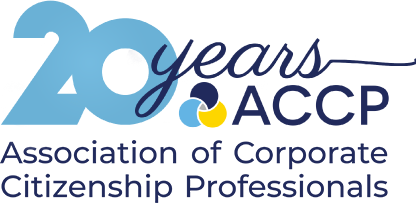CEO
The era of AI is here, and if you’re like most professionals, you’re trying to figure out how to use the vast array of available tools to optimize your organization, your work, leverage, and, perhaps, your life. Corporate leaders are hyper-focused on leveraging AI to cut costs and create growth. A quick review of job ads and resources for employee training reveals that AI and predictive analytical skills are in high demand.
But AI skills aren’t everything. To fully equip your employees for an AI-driven future, you must also focus on the people side of things and the soft skills required to collaborate, connect, and thrive in complex environments. And guess what? Skills-based volunteering (SBV), the tried-and-true offering much loved by CSR professionals, builds those skills, supports your employees’ careers, and drives real social impact.
Let me break it down. Skills-based volunteerism:
1. Develops human-centric skills AI can’t replicate:
Empathy, adaptability, collaboration, and communication become differentiators as AI automates task-based work. The ability to communicate to varying audiences in ways that result in others actually listening to you is a must-have skill.
2. Enhances Emotional Intelligence:
Exposure to diverse communities and social challenges beyond the typical work bubble builds deep listening, cultural humility, and a broader perspective. The more we understand others’ experiences, the more informed, empathetic, and effective we become.
3. Strengthens Adaptive Communication:
Collaborating with nonprofits enables employees to convey complex ideas clearly and effectively engage diverse stakeholders. These partnerships also create a unique environment where your people can test new approaches, build confidence, and develop skills they don’t typically use in the workplace.
4. Builds Resilience and Creative Problem-Solving:
Tackling the business challenges of resource-constrained nonprofits strengthens flexibility and innovative thinking. These are critical skills for thriving in today’s fast-changing workplace. Developing comfort with ambiguity and failing fast helps your people better understand and manage risk.
5. Fosters Leadership through Influence:
Leading an SBV project offers a unique opportunity for employees to step into leadership roles. In just a short time, employees can discover new strengths or get to flex skills they’ve been eager to develop, such as leadership and people management.
Bottom line: As we work to integrate AI efficiency in our organizations, let’s not lose track of the human need to connect, belong, and grow. Today’s workplaces need individuals who can effectively combine AI fluency with strong interpersonal skills.
SBV is about bringing different perspectives to the table and working together toward a shared goal. In the end, everyone benefits. Nonprofits get solutions to their business challenges, and employees walk away with valuable skills and experiences they can take back to their companies. Companies gain a stronger leadership pipeline and a workforce with sharper, more versatile skills.
As you manage your employee engagement portfolio, consider how SBV can help you invest in your people. More questions? Ask your fellow ACCP members about their experiences, or contact me!

